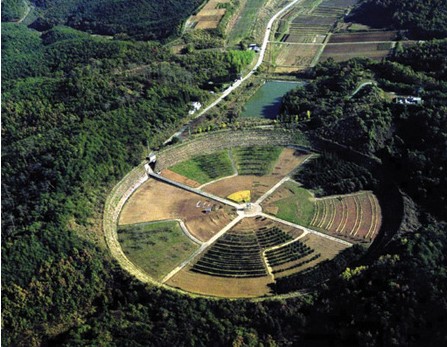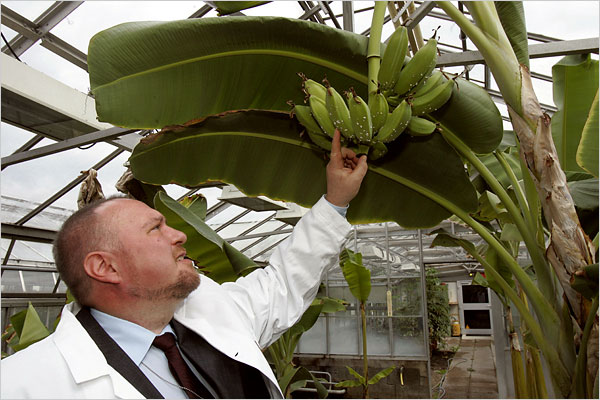The Atomic Garden LIVES!!
Government research into atomic mutation of plant material has continued into the present day, most prominently at the Institute of Radiation Breeding, Hitachiohmiya, Japan. The United Nations is a heavy promoter of what it calls “Nuclear Technology Serving Agriculture”, devoting extensive support and funds to efforts particularly in developing nations. It is hard not to se this as a ‘poor-man’s’ approach to genetic engineering, or to hear the echoes of “Atoms for Peace”.
The midcentury plant irradiation research, startling as it seems, was performed prior to the concept of an ecosystem entering the public consciousness. There was no idea, at the time, that we could harm ourselves by harming nature, and no concern expressed about introducing plants with mutated germplasms into the wider world. If we think of modern GM as taking a scalpel to the genome, mutation breeding by irradiation was just smashing it with a hammer to see what happens. As with modern biotechnology, the food industry was the main driver behind the new plant modifications.
The attitude of the atomic gardeners was of their time. What is more unusual is that present-day mutation experiments have proceeded without examination of the well-documented scientific history of past atomic gardens.

The present-day gamma garden at the Institute of Radiation Breeding, Hitachiohmiya, Japan.
In a 2007 interview in the New York Times headlined “Useful Mutants, Bred with Radiation” Dr. Pierre Lagoda, head of plant breeding and genetics at the International Atomic Energy Agency said that radiation breeding, though an old technology, was undergoing rapid growth. New methods that speed up the identification of mutants are making radiation breeding even more popular”.
“Radiation breeding is widely used in the developing world, thanks largely to the atomic agency’s efforts. Beneficiaries have included Bangladesh, Brazil, China, Costa Rica, Egypt, Ghana, India, Indonesia, Japan, Kenya, Nigeria, Pakistan, Peru, Sri Lanka, Sudan, Thailand and Vietnam.
Politically, the method is one of many quid pro quos the agency, an arm of the United Nations in Vienna, offers client states. Its own agenda is to inspect ostensibly peaceful atomic installations in an effort to find and deter secret work on nuclear weapons.”

Pierre Lagoda, the head of plant breeding and genetics at the International Atomic Energy Agency, showing mutated plants at a greenhouse in Austria. Credit Herwig Prammer for The New York Times
In the NYT article, Lagoda is eager to highlight contemporary successes of these new Atomic Gardens, including a virus-resistant cocoa tree in Ghana, an improved variety of barley for the Peruvian Andes, and a high-yielding rice for the Mekong Delta. Long-term studies, however, are not cited.
It is no accident that these successes are from countries like Ghana, Peru and Vietnam: gamma gardens are cheap and easy to set up, especially when compared to the techniques and equipment required for high level genetic modification. A new gamma garden–the “Gamma Phytotron” was constructed in Jeongeup, Jeonbuk Korea in 2008, and a “Gamma Greenhouse” in Jalan Dengkil, Malaysia in 2009.

Malaysia’s Gamma Greenhouse

Korea’s Gamma Phytotron





